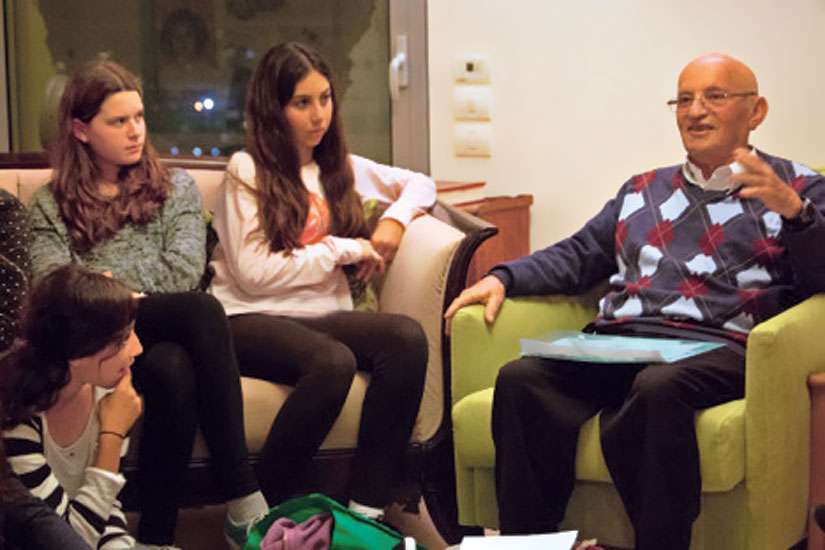Co-ordinated by Zikaronbasalon, Memories at Home, hundreds of small groups gathered in their living rooms to have meaningful and vibrant conversations on Holocaust Remembrance Day, April 15.
The average age of Holocaust survivors living in Israel is 83, and approximately 40 survivors die each day, according to a report just released by the Foundation for the Benefit of Holocaust Victims in Israel.
The soon-to-be absence of survivors, due to mortality rates, prompted founders Adi Altschuler and her husband Nadav Embon to reflect on the future and relevance of traditional Holocaust commemorations. Wanting to shape a social gathering around living memories, they began a discussion in their own living room, inviting friends and survivor Hannah Bergman.
They didn’t know who would show, but in the end, so many friends came that they spilled out onto the balcony. Someone played music, others brought beer and bourekas (savory pastries), and all discussed life-after-pogrom.
On this year’s Hashoah, some 3,000 alternative Holocaust commemorations took place in Israel, among them, Zikaronbasalon.
The get-togethers for students are organized into parts — the story of the Holocaust victim, songs and diversions, conversation and questions.
The gathering I attended was in the home of a therapist who has a seventh grader. Approximately 25 schoolchildren joined in, as lively and noisy as 12-year-olds can be.
They listened to survivor Eli Rozenman, 73, who was two when his mother fled Poland during World War II and remained on the run throughout the forests of southeast Poland, finally settling in Armenia. He joked with the students, read some of his poems, asked for their impressions and showed them the only possession from his former life — a baby spoon.
At the end of the evening, he signed autographs and said he felt like a rock star.
(Knight, a former CNS staffer, now lives in Tel Aviv.)


